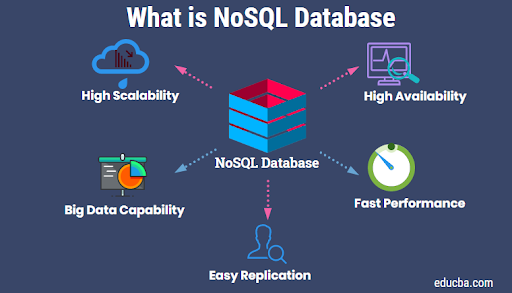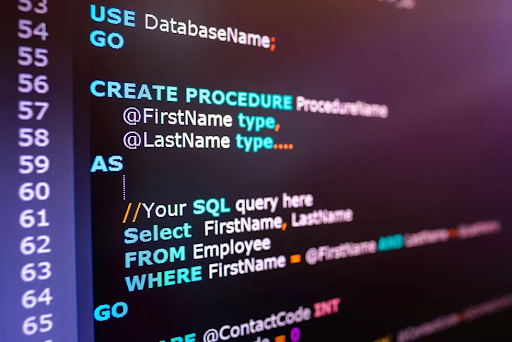While building their dream projects, many developers are being followed with many misconceptions about what database to choose for work. The age-old debate of SQL vs NoSQL has been going on since the day non-relational bases were conceived. Generally, both of them have very common functionality, however, the differences between SQL and NoSQL are major enough to be neglected. In this article we are going to discuss NoSQL vs SQL differences, NoSQL vs SQL performance, and when to use NoSQL over SQL.
What Is Sequel Language
To begin with, It is a database programming language for retrieving and managing data in relational databases. Structured Query Language is a standard database language used by all relational database management systems such as MySQL, Oracle, PostgreSQL, etc. They also use a variety of dialects like T-SQL, P-SQL, G-SQL.
This query language was adopted by ANSI standard in 1986 and ISO standard in 1987, it is the most important query language to learn if a person wants to work in a field of Data Science. The language is used by big companies like Facebook, Instagram and LinkedIn to store data and back-end.
What’s the significance of the sequel language? A computer programming language is a set of instructions for accomplishing specific operations on computers or equipment. We can use precise algorithms to control the behavior and output of a computer using a programming language, which helps computers and other machines to process vast amounts of complicated data more efficiently and effectively. That is why it is beneficial to business, particularly in the development of data storage services.
What Is Sequel Language Used For
Data basically surrounds us everywhere. If we speak about amounts of data which are stored in masses, sequel language stands for a key communication tool with data. The core purpose of it as a programming language is to “talk”, store, manage, search for, retrieve data within the system it exists in. To communicate with data, so-called statements – keywords/ commands are used which makes it convenient to operate data.
What Is SQL Server Used For
So, you have the data, but how to access it? When writing applications that store information, developers pretty often use SQL Server company. Instead of inventing new lines of code for every new project, they can keep the existing one on a server. Thus, it eases all the process as well as makes it less time and energy-consuming and less expensive.
Let’s take Microsoft SQL Server as an example and dive into details. Microsoft SQL developers created this platform/ back-end app in 1988 for processing different amounts of data. As it’s called relational, all data pieces are united in tables of the same entity, like a spreadsheet, which makes it easy for developers to access and manage. The Server has a variety of editions depending on its purpose and size.
- Enterprise edition is created for big companies storing an extra large number of data counting in petabytes.
- Standard edition is the most handy option for companies with reasonable amounts of information to store.
- Web edition is an optimal choice for web data management.
- Business Intelligence edition possesses more tools for analytics and business management while working with sensitive data.
- Workgroup edition is no longer available for use, and was created to operate the data of small businesses.
- Express edition is a fine replacement of the Workgroup one, a good choice for small and medium companies to store their data effectively and not costly.
How and Why NoSQL Appeared
Starting from the mid 1990s, when the internet was learning to handle all that volume of different kinds of information, and the users were starving for easier ways to process it, SQL vs NoSQL database concept came to life. Non-relational aka no-SQL-system appeared to be flexible and work with various structured and unstructured data masses including Big Data.
As we mentioned before, such companies as Facebook, LinkedIn, Google use sequel language, however, it hasn’t stopped them from happily adopting non-relational systems when the right time came. The CAP Theorem states that a non-relational data storage cannot simultaneously guarantee more than two of three principles:
- Consistency: even after operating data within the storage, it remains consistent;
- Availability: the data-storing system is persistently available and doesn’t do down;
- Partition Tolerance: working on different servers, the whole system still remains functional, being partitioned and not being able to communicate to each other, servers still keep the data managed.
NoSQL Databases Comparison
Speaking about NoSQL databases comparison, all of them are used according to the specific purposes:
A Key-Value DB, unlike a traditional relational database, doesn’t model data as a pre-set structured table but chooses the most suitable classification and organization variant according to data type and size.
A Document-Oriented DB is managing semi-structured data according to internal document storage. The given item is not being spread over the table but saved in one piece, which makes it easy to display data masses and navigate within the storage.
In a Wide Column Store DB names, formats, order of the columns within the same table can be changed for more convenient use, for example, columns for specific rows can be managed to store together.
In a Graph DB each data piece stands for person/ object/ business (entity) which is symbolized by a specific memory (node). Each node is connected to another, making an “edge” [connection], where each edge possesses a unique identifier. These identifiers define key-value pairs and help to understand the logical structure of the data.
Difference Between SQL and NoSQL
Briefly, relational storages contain structured data where each item has only one attribute, when non-relational storage can process different types of data whatever the structure is. As being well-managed and structure-limited, relational bases use only sequel language while the opponent is more flexible and is able to add syntax as you proceed.
Unfortunately, SQL is more widely-used which means more experts are familiar with operational features and bottlenecks. As different types of NoSQL bases are being less often to work with, there can be a bit of a struggle to find a specialist having deep knowledge here.

Conclusion
In SQL and NoSQL pros and cons there’s no winners, because NoSQL or SQL developers work with different service requests exclusively and according to the purpose. Based upon needs, there are specific cases of when to use NoSQL over SQL, when running the project, we advise you to work with a trusted vendor, which possesses the knowledge of both, the bright example of both NoSQL and SQL developers..






